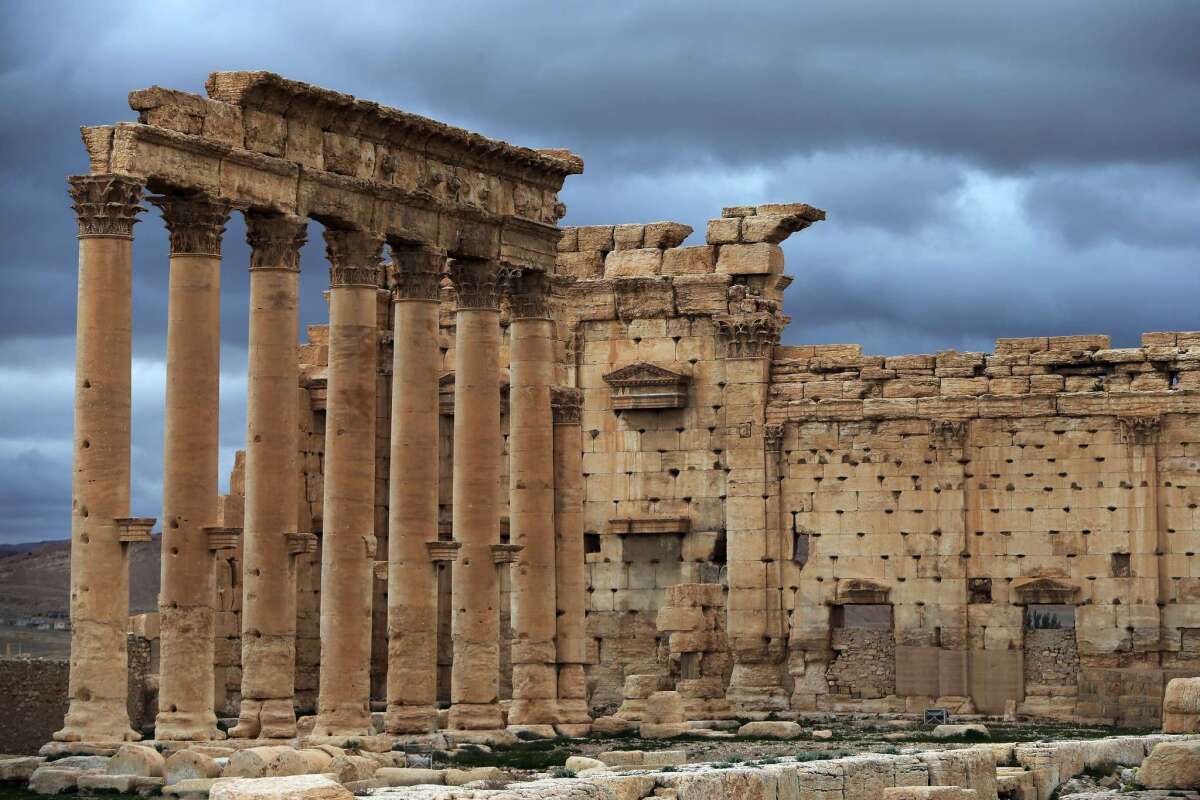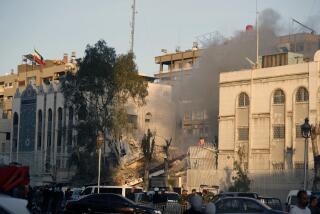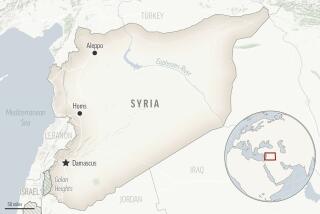2,000-year-old temple in Syria destroyed by Islamic State, U.N. says

A 2014 file photo shows a view of the external courtyard of the Temple of Bel in the ancient oasis city of Palmyra, northeast of Damascus, Syria.
An explosion in Syria’s militant-controlled city of Palmyra destroyed the main building of the ancient Temple of Bel, the United Nations said Monday.
Activists and Palmyra residents had said an Islamic State bombing extensively damaged the 2,000-year-old temple Sunday. One resident described a massive explosion, adding that he saw pictures of the damage but could not get near the site.
On Monday, the U.N.’s UNOSAT program said satellite analysis confirmed the building was demolished.
Earlier in the day, Maamoun Abdulkarim, the head of the Antiquities and Museums Department in Damascus, said that “undoubtedly” a large explosion took place near the temple, which lies in a sprawling Roman-era complex.
An Islamic State operative told the Associated Press over Skype on Monday that the temple had been destroyed, without elaborating. He spoke on condition of anonymity because members of the group are not allowed to speak to journalists.
Residents in Palmyra told the official Syrian state news agency that Islamic State militants destroyed large parts of the temple and booby trapped other parts of it, expressing concern that the militants plan to destroy the rest soon.
The extremists destroyed the smaller Temple of Baalshamin in the complex last week. It posted images of the destruction days later.
Amr al-Azm, a former Syrian government antiquities official who now is a professor at Shawnee State University in Ohio, said he believed a very large amount of explosives was used in the blast near the Temple of Bel.
“This is the most devastating act yet, in my opinion. It truly demonstrates ISIS’ ability to act with impunity and the impotence of the international community to stop them,” Al-Azm said, using an acronym for the group.
The temple, dating to 32 AD, shows a unique merging of ancient Near Eastern and Greco-Roman architecture. It is dedicated to the Semitic god Bel and is considered one of the most important religious buildings of the first century. The temple consists of a central shrine within a colonnaded courtyard with a large gateway, and lies within a complex that has other ruins, including an amphitheater and some tombs.
Palmyra was one of the important markets and caravan cities of the Roman Empire, linking it to India, China and Persia — something reflected in the city’s arts and architecture.
Times staff writer Lauren Raab contributed to this report.
More to Read
Start your day right
Sign up for Essential California for news, features and recommendations from the L.A. Times and beyond in your inbox six days a week.
You may occasionally receive promotional content from the Los Angeles Times.






